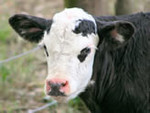
It includes several changes from the initial proposed rule, issued in August 2011, which were made following consultation with industry stakeholders. These include the acceptance of brands and tattoos as official identification, as well as exemptions for livestock moved to a custom slaughter facility and chicks moved from a hatchery.
The USDA also confirmed that cattle under the age of 18 months would be exempt from identification requirements unless moved for shows or exhibitions. It said it would establish separate rules to govern the traceability requirements for these animals.
Announcing the new legislation, Agriculture Secretary Tom Vilsack said: "With the final rule announced today, the US now has a flexible, effective animal disease traceability system for livestock moving interstate, without undue burdens for ranchers and US livestock businesses.
"The final rule meets the diverse needs of the countryside where states and tribes can develop systems for tracking animals that work best for them and their producers, while addressing any gaps in our overall disease response efforts. Over the past several years, USDA has listened carefully to America’s farmers and ranchers, working collaboratively to establish a system of tools and safeguards that will help us target when and where animal diseases occur, and help us respond quickly."
The new regulations have been cautiously welcomed by the US meat industry, which praised the additional flexibility introduced in the final rule.
National Cattlemen’s Beef Association (NCBA) chief veterinarian Kathy Simmons said: "NCBA is encouraged that many of the priorities of cattlemen and -women have been considered in this final rule. Cattlemen and -women are looking for a rule that does not come with additional costs and does not hinder the speed of commerce. Brands will be recognised when accompanied by an official brand inspection certificate as means of official identification for cattle. The rule will also allow flexibility in tagging procedures and paperwork. Most important to cattle producers is the Secretary’s announcement of separate rule-making for beef cattle under 18 months of age.
President of the National Pork Producers Council (NPPC) RC Hunt said the new rules would help reduce animal disease outbreaks and ensure the US meets the veterinary standards set by the World Organization for Animal Health.
"The goal of a traceability system is trace-back of an animal to its farm of origin within 48 hours of the discovery of a disease. That would allow a disease to be brought under control and eradicated more quickly, saving animals – and taxpayer dollars – and keeping foreign markets open to our exports," he said.
However, the American Veterinary Medical Association (AVMA) raised questions over whether the new rule was strict enough, calling for a mandatory, uniform national disease traceability and identification system to "more broadly protect the nation’s food supply and food animal populations".
Dr Ron DeHaven, AVMA CEO and a former APHIS administrator, explained:"The AVMA believes this new rule will lay the foundation to further strengthen US animal disease prevention and response capabilities.
"It is our hope that this will lead to a more comprehensive, electronic system that will result in even greater improvements and more rapid animal traceability in the event of a disease outbreak. While it doesn’t go as far as we would like, the new rule is a step in the right direction, and we are pleased that it is official."





